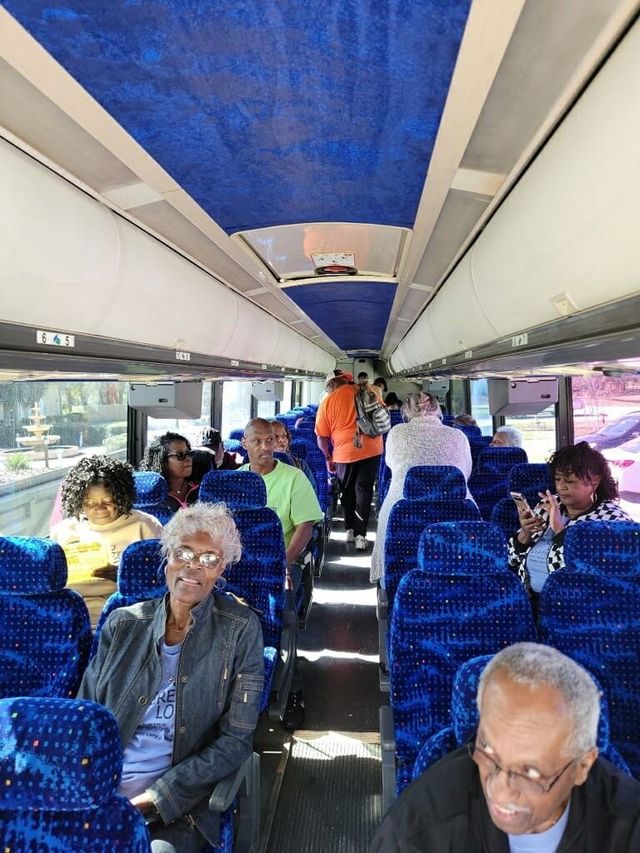20 Great Ideas For Picking Employee Shuttle Websites
20 Great Ideas For Picking Employee Shuttle Websites
Blog Article
Employee Shuttle Transportation: Budgeting And Costing Tips
Here are 10 tips for estimating the expense of employee shuttles.
1. Conduct a thorough Cost Analysis
Begin by conducting a thorough cost analysis of the whole shuttle operation. This should include direct costs like vehicle purchases lease, rentals, or expenses, in addition to operational costs like maintenance, fuel and insurance, as well as the salaries for drivers. Understanding all the costs involved will help to determine the budget necessary to operate a reliable shuttle service.
2. Establish Clear Budget Goals
Establish budget goals built on a cost analysis. Decide how much money your organization will invest in shuttle services. You can also establish key performance indicators (KPIs) that can be used to measure performance. These KPIs might include employee satisfaction levels, usage rates and overall effectiveness. Clear goals can assist in distributing resources and control spending.
3. Explore the possibilities of financing
Consider funding options that will help the shuttle service. This could be internal company grants, funds or agreements with local authorities for transportation who may provide financial support or resources. Understanding the funding options available can ease some financial burdens and allow for more extensive service offerings.
4. Choose the vehicle that is the least expensive
When choosing the vehicles that will be used for shuttle services, choose the most affordable option that balances initial expenses for purchase and operational expenses. Take into consideration factors such as reliability of the vehicle in addition to fuel efficiency, maintenance and requirements. Consider purchasing used vehicles that are in good condition or leasing them instead of purchasing could reduce upfront costs.
5. Create an evolving pricing model
You should consider implementing an automated pricing system for shuttle service, if it's feasible. A nominal fee could be imposed for shuttle services, assisting to pay for the operational expenses. The use of a tiered pricing system based on usage may make it easier for employees to use the service while still contributing to the budget.
6. Cost Management - Use Technology
Use technology to improve efficiency and decrease costs. Fleet management can monitor the use of fuel and monitor maintenance. They can also optimize routes. GPS tracking can improve scheduling and reduce the amount of idle time. This reduces fuel costs. It may cost a lot at first however it will reduce your expenses over time.
7. Control and Monitor Operational Costs
Review your operational expenses regularly to determine areas where costs can be reduced. Monitor fuel consumption closely, along with maintenance costs and driver overtime. You can save money by using strict fuel management methods such as encouraging environmentally friendly driving. Set up monthly or quarterly reviews to make sure your shuttle service is on budget.
8. Get your employees involved in cost-saving initiatives to save money.
Encourage employees to take part in shuttle programs that reduce costs. Encourage employees to carpool or reward those who frequently utilize the shuttle. Engaging your employees will not just create a feeling of ownership, but it could also boost usage which, in turn, reduce overall expenses.
9. Plan for Contingencies
Make sure to include a contingency plan in your budgeting process to cover any unexpected expenses. Unexpected costs can arise for shuttle services, such as emergencies for repairs or fluctuation in the cost of fuel. Set aside a small portion of your budget to pay for contingencies. This can ensure the seamless operation of the shuttle service.
10. Regularly Evaluate and Adjust Your Budget
Final, make adjustments and analyze the budget in accordance with the actual performance. Gather feedback from the employees on their experience and satisfaction with shuttle services. Regularly assessed assessments can help you discover trends and the needs of transportation and allow for timely budget adjustments.
These guidelines will help companies to manage their costs efficiently and develop a budget that can be sustainable for shuttle services for employees, ultimately improving the efficiency of the service and employee satisfaction. Check out the recommended https://www.swoopapp.com/solutions/employee-transportation-service/ for website info including miami airport shuttles, bus shuttle service, airport transportation near me, shuttle to airport near me, airport shuttle from airport, airport shuttle, book a shuttle, book a shuttle, airport transportation, shuttle transportation to airport and more.
10 Top Tips On The Capacity And Vehicle Options Of A Transportation Service For Corporate Events. Service
Here are 10 top tips about the capacity and options for a vehicle when it comes to a corporate transportation service.
1. Evaluate Event Attendance Estimates
Estimate how many people will attend the event. This can be done using registration data, RSVPs, or historical attendance records. Knowing the expected number of participants will allow you to better plan your vehicle options and estimate the capacity needed for transportation.
2. Pick the best vehicle for your needs
Choose the best vehicle based on your estimated number of guests as well as the nature of the event. For larger parties, consider the use of shuttles or buses that can take several passengers. Luxury vans and sedans could suit smaller groups, or VIP attendees. Having a wide range of options for vehicles will ensure that everyone feels relaxed.
3. Consider accessibility requirements
It is important to ensure that the cars you select are accessible to everyone, even people with disabilities. This may mean choosing vehicles equipped with wheelchair-lifts or low entry alternatives. It is important to be inclusive when it comes to transportation. This not only adheres to legal standards however it also makes the trip more enjoyable for everyone.
4. Make a list of pick-up locations and plan for multiple pickups.
Plan for multiple pickup points in order to facilitate transport. This can include central points such as airports, hotels, and public transport hubs. By accommodating different pickup points, you can maximize attendance and minimize logistical issues.
5. Use a Reservation System
It is worth considering implementing an online booking system for transportation services. The attendees can book their seat in advance. This helps to ensure that the vehicles are well-filled and reduces the risk of overcrowding. A reservation software can help adjust capacity in response to actual demand.
6. Optimize Routes to Improve Efficiency
Create your routes with precision to ensure that you can arrive at the location on time. Analyze traffic patterns to determine the best routes for vehicles. Route optimization software helps identify the most efficient routes, decreases travel time, and improves the overall experience for attendees.
7. Providing On-Demand Transport Services
If you are planning a large event, consider offering shuttle service on-demand which allow guests to request transportation at their convenience. This is particularly beneficial during events that last for many days or with various schedules. On-demand services are a great way to increase flexibility and ensure that attendees are able to travel when they require it.
8. Monitor the capacity of your vehicle
Keep track of the vehicle capacity use during the event. The amount of seats that are filled will help you make quick decisions, like adding additional vehicles to certain shuttles if they're booked out. Monitoring capacity after an event can also be helpful to plan for the future of transportation.
9. Communicate Transportation Details Clearly
Inform the attendees about all details regarding transportation well in advance of the event. Inform guests about pick-up locations, schedules and different types of vehicles. Using multiple communication channels, such as email, event apps or printed materials, ensures that all attendees are informed of the transportation options available to them.
10. Take Feedback to Improve Future Services
After the event, take feedback from attendees regarding their travel experience. You can ask attendees about their experience with transportation in terms of the speed of their travel, vehicle comfort and satisfaction. The feedback collected will help to determine what was successful and what could be improved upon in future corporate events.
These tips allow organizations to control the event's capacity and select appropriate vehicle options, which can ensure a smooth and enjoyable experience for all guests. A well-planned and executed plan for the event can be a key factor in its overall success, and also creating a positive image of the business. Check out the top event transportation for more examples including mgt logistics, pace transportation service, global logistics, solution transport, trailering services, transportation management solutions, trailering services, transportation services, global logistics co, transportation logistics services and more.